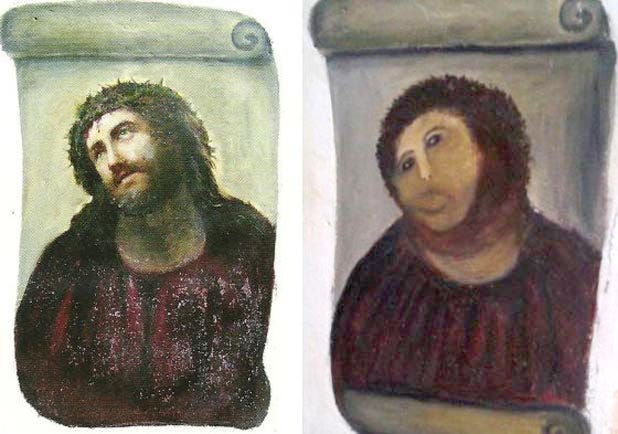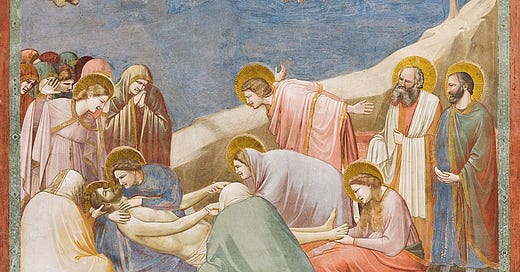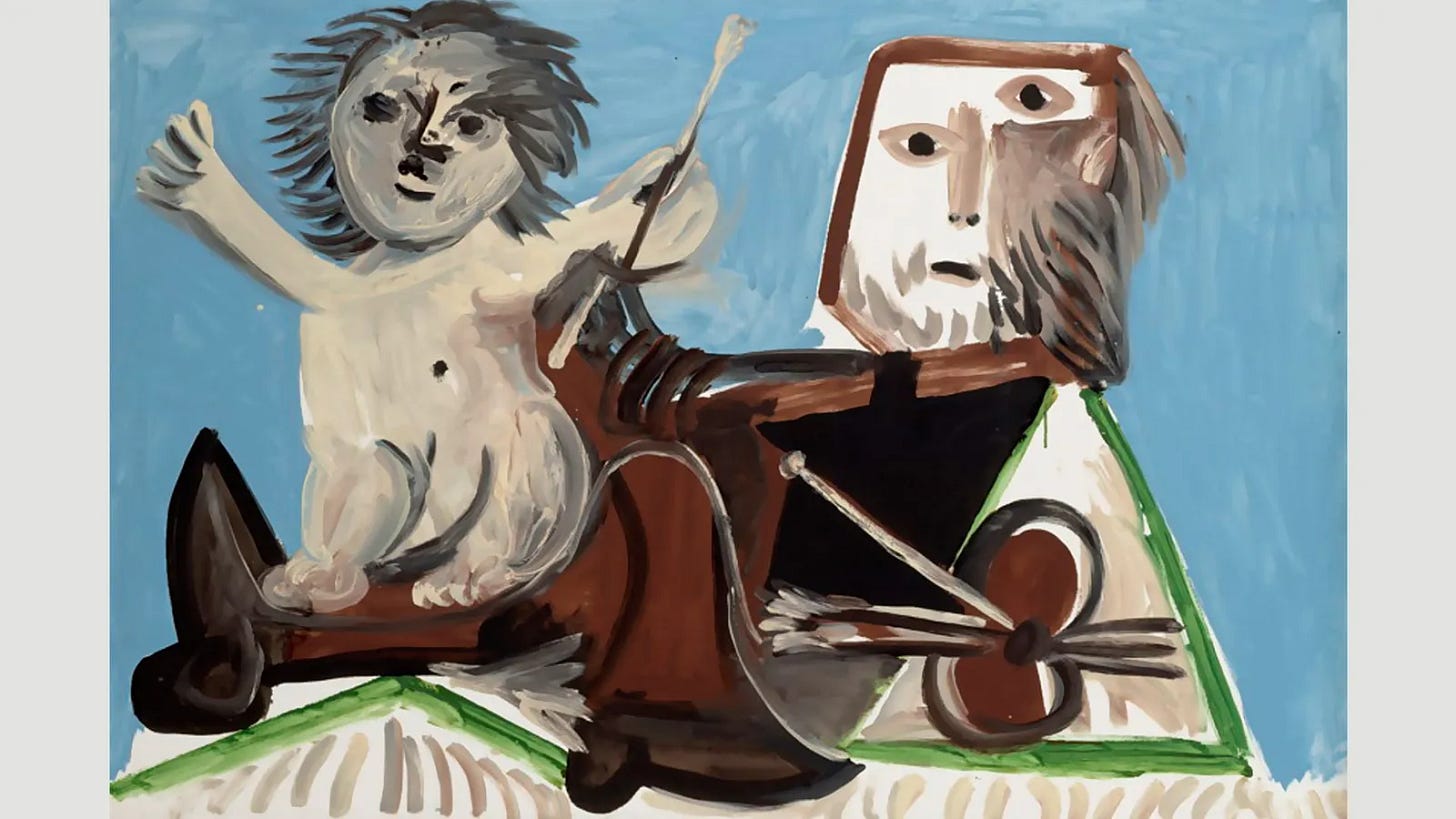Permit me to use visual art examples to demonstrate playfulness and humanity, two elements that add immeasurably to the quality of a work.

“We don’t stop playing because we grow old, we grow old because we stop playing.” ―George Bernard Shaw
Like the advertising and commercial art of today, church art was made by the very best trained artists. All of it demonstrates a very high level of skill. But playfulness and humanity set great works apart. “The Virgin & Child with St. Anne” by Leonardo da Vinci was originally the high altarpiece in a church in Florence. Today it hangs in the Louvre.
Its complex composition conveys affection and love. Baby Jesus plays with a little lamb as his mother Mary sits in grandmother St. Anne’s lap — they also beam with affection.
For years da Vinci explored how to best paint this risky idea, breaking out of the mold of what religious art should be. (Then everyone copied his formula.)
Da Vinci is basically doing what Giotto did in the 1300s to jump religious art out of medieval times and into what would soon be the Renaissance. Renaissance Humanism pushed innovations even further.
Giotto’s “Lamentation,” painted for a local church in Florence as well, invites the viewer to become one of the mourners alongside the saints. There is something heart-rending about witnessing angels “weeping bitterly” at the tragic scene of an innocent man, Christ, being unjustly put to death. This was something that had never before been depicted, even though it is the heart of the Christmas and Easter stories.
Play
Playfulness doesn’t happen without self-assured confidence. It’s equally true in art, music, and writing.
Pablo Ruiz Picasso was a child prodigy who by age 15 had mastered the artistic styles of the best painters in history. After that, he devoted himself to play to push the boundaries of his artistic expression.
“As a child I painted like an adult. As an adult I had to learn to paint like a child… It took me four years to paint like Rafael, but a lifetime to paint like a child.” —Pablo Picasso
Suggestions for increasing your own playfulness:
Watch comedians perform. Dave Chapelle, Monty Python, Joan Rivers and others love playing with language, ideas, and the timing of their delivery.
Play games, sports or music you enjoy and let yourself play as if you were a child again.
Humanity
The original painting Ecce Homo (Behold the Man) was of very high quality (like all church art of the period), but it was not noteworthy. The composition is standard — such works are very common and therefore it was not considered to be of great value before it was destroyed in the process of being cleaned.
Kind, humane eyes that express real feeling in the painting are extremely difficult to paint, and a surprisingly high level of skill is required to make a simple beard look lifelike.
The talented artist (whose name we do not know) perhaps could have created a great body of innovative work on the scale of da Vinci or Giotto, but he did not do so to our knowledge.
Ironically, Ecce Homo’s uncommonly bad restoration (on the right) by a volunteer cleaner in her 80s has made it world famous. When she wiped away the paint along with the dust while cleaning it with harsh cleaning chemicals, she tried to quickly re-paint it before anyone noticed.
Devoid of playfulness and humanity, it is a work of genius of another sort, striking a funny bone for its unapologetic audacity. Today it is generating substantial sums as tourists flock to pay admission to the Sanctuary of Mercy Church in Borja (near Zaragoza, Spain) to behold the debacle.

How to foster your own humanity as an artist/writer:
Things like volunteering at an animal shelter might help you better connect with your own humanity.
“…the most important thing is to find and nurture your community. Find your way into belonging, into feeling loved and supported, and knowing your sacredness.
“These days, my advice goes even further. The most important thing for me now is to protect my joy. I focus on this every day. I still track what the world is doing and add my voice to fighting for human rights, but I also make my daily joy a priority. “Protect your joy,” is my best advice. And keep writing. Some projects, like mine, take decades to come to completion. Writing takes the time it takes.” —Leslie Absher, author of Spy Daughter, Queer Girl
Key Traits of Successful Authors
One key trait I’ve noticed that successful authors share is that they are very organized and prepared, even if they might not always appear to be. They prepare transportation in advance and know exactly what they are going to do, and actively propose projects instead of waiting for things to happen. They respect their own time as well as …







Struck just the right chord with me with this little symphony, Laura. Thank you.